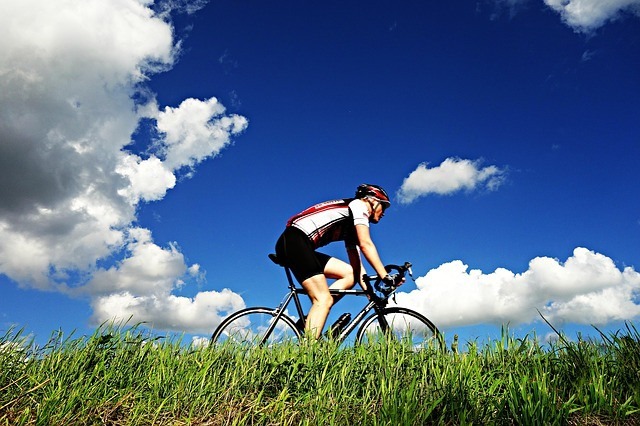Understanding the best ways to avoid common cycling injuries will help you prevent pain and suffering, as well as time off the bike. Many cycling injuries are preventable and are caused by improper bike fit or improper training. Other cycling injuries occur during crashes. If you are currently injured, you need to treat the injury, but also consider ways that you can prevent the injury from occurring again in the future.
Some of the most common cycling injuries are Achilles tendonitis, patellar tendonitis, saddle sores, neck pain, lower back pain, a broken clavicle, and road rash. We’ll break these injuries down and determine how to avoid each one.
Achilles tendonitis – Achilles tendonitis is an irritation and inflammation of the Achilles tendon. It can be caused by overuse and also by poor bike fit. If you experience Achilles tendonitis, it’s important to allow the tendon to rest and the inflammation to subside. It’s also important to address the cause of the injury so that you can avoid it in the future. Overuse and over-aggressive training can lead to Achilles tendonitis. Another cause is improper bike fit. Consider lowering the saddle and allowing the foot to dorsiflex (point the toe up) at the bottom portion of the stroke to reduce tension on the tendon.
For a free legal consultation,
call 1-844-242-9253
Patellar tendonitis – Patellar tendonitis is an irritation and inflammation of the patellar tendon which connect the patella (kneecap) with the shin bone. It can occur when the saddle is too low or pushed too far to the front. Common knee overuse injuries are often related to the saddle position.
Impact injuries – Impact injuries occur when you crash your bicycle. Minor impact injuries may consist of bruises, scrapes, and minor road rash. More severe injuries include fractures, sprains, and head injuries. Wearing a helmet is critical to help protect you in the event of a crash. When riding your bicycle, be aware of others around you, and try to ride with an escape route in mind.
Click to contact our personal injury lawyers today
Lower back pain – Changes in posture on your bicycle can lead to lower back pain, one of the most common bicycle injuries. Leaning forward on your bike, over the handlebars, can lead to lower back pain. This can be exacerbated by sitting at your desk for long periods of time. The sciatic nerve is often irritated. This nerve, located in the lower back, can cause hip pain and pain that runs the length of the leg. If you experience lower back pain after riding, check your posture and bike fit.
Complete a Free Case Evaluation form now
Foot pain – Foot pain is not uncommon in cycling. When you ride, your feet are exerting force with each pedal stroke. Improper shoes or socks that are too thick can cause this pain. Consider purchasing a pair of cycling shoes and be sure you have a good fit. Feet can swell during cycling, so be sure you have ample room for your feet to expand in your shoes.
Saddle sores – These irritations can range from minor inconveniences to a major pain. They can be caused by ingrown and infected hairs or simply prolonged pressure from the saddle. Keep the affected areas clean and dry and expose them to air as much as possible. Take a few days off the bike to allow for redness and swelling to heal. If you experience increased pain, fever, an expanding area of redness, or another other signs of an infection, visit your doctor.
Neck pain – Cycling puts the neck in an unnatural position. This can cause strain through the neck and even across the shoulders and into the arms. Make sure your bars are not set too low. Also, stretch your neck gently before and after each ride. For ongoing problems, take your bike in for a proper fit.
Any signs of pain or numbness and tingling after cycling should be noted and followed. These can be early symptoms of developing injuries. If caught early, you can prevent these injuries from progressing further.
Despite being a great low-impact sport, cycling can cause injuries. Always ride with appropriate gear and stop if you begin to experience pain. For more information and great cycling tips, check out our Facebook page.
Call or text 1-844-242-9253 or complete a Free Case Evaluation form


